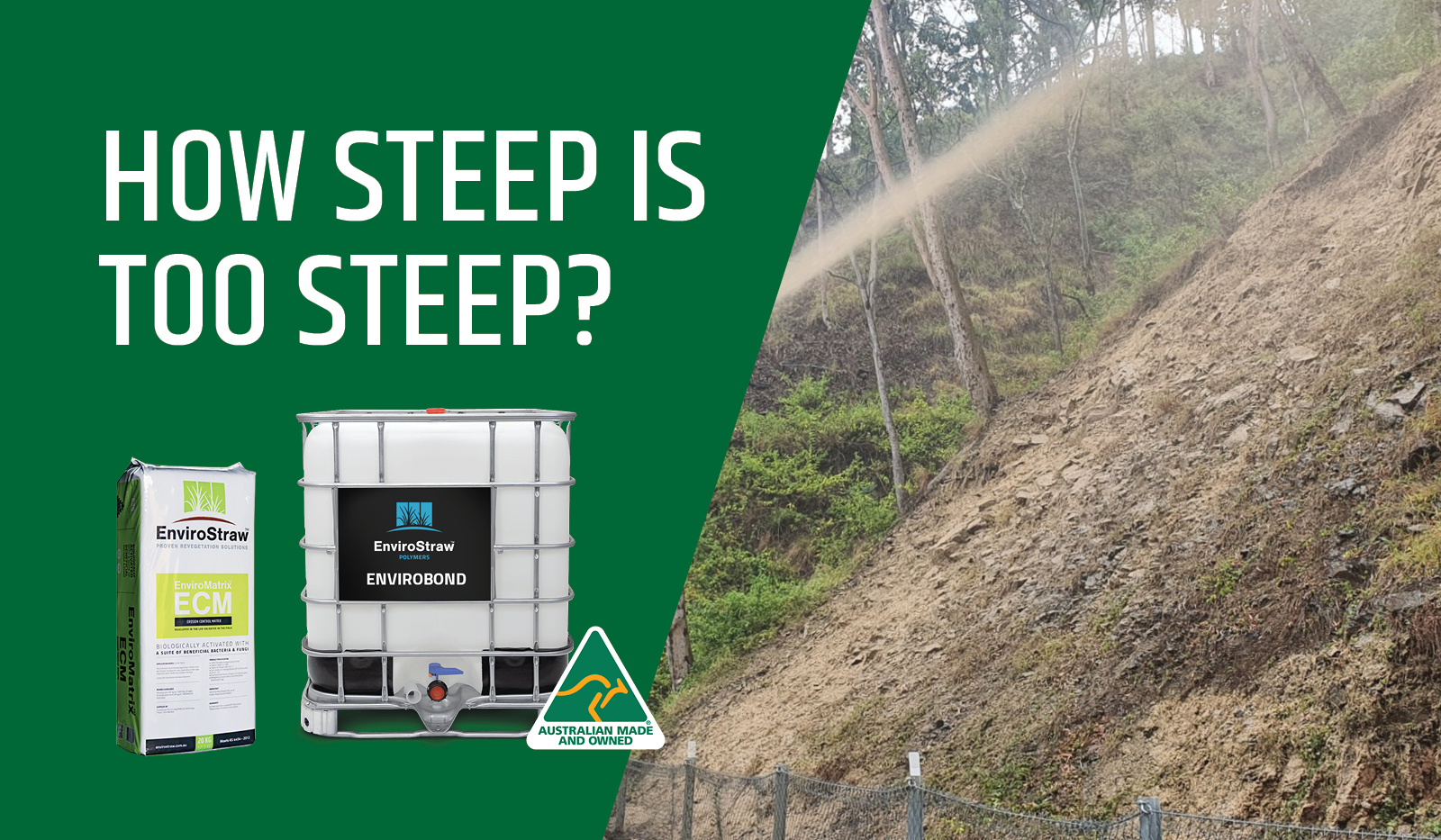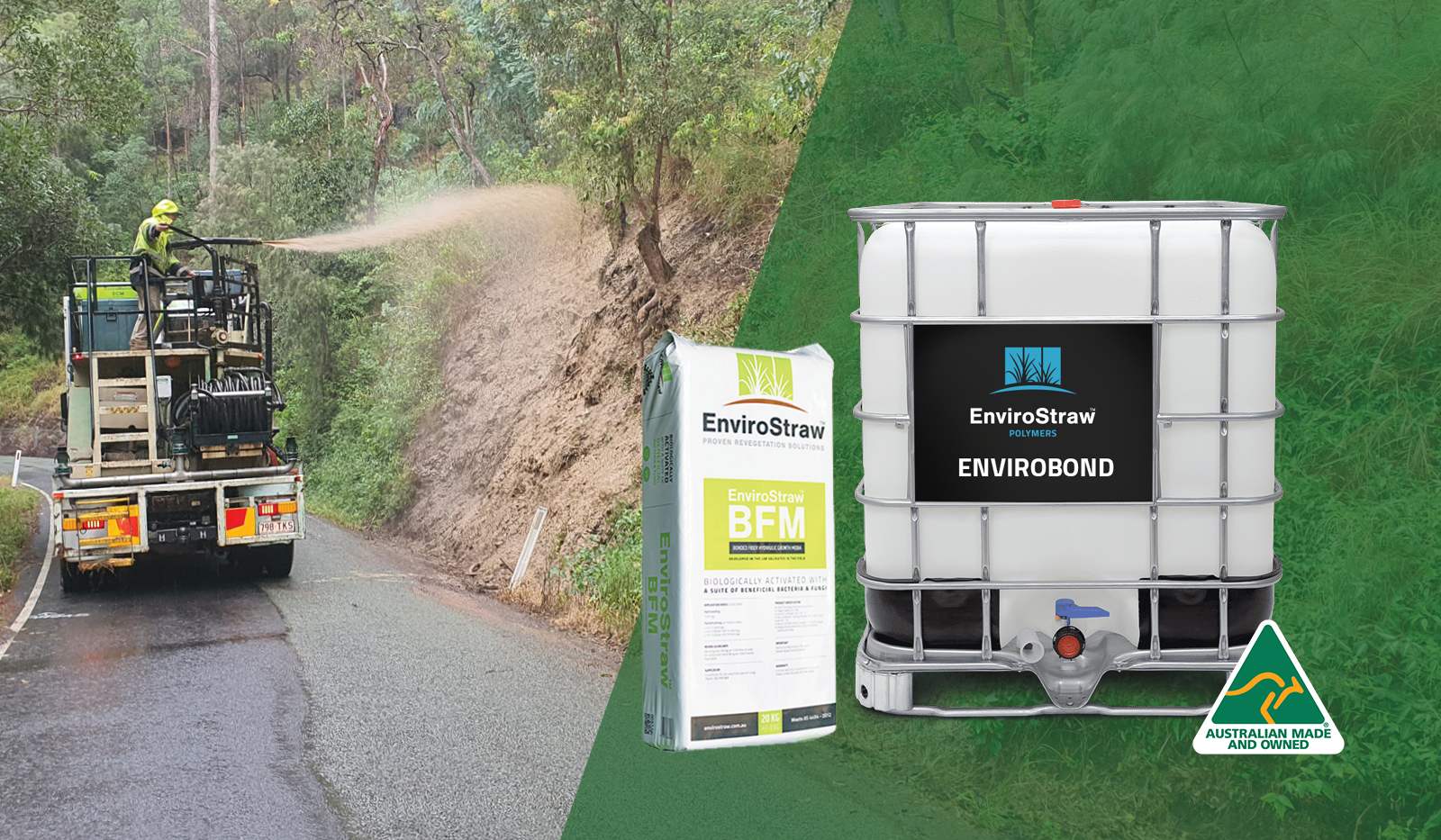When it comes to erosion control on steep slopes, EnviroStraw’s EnviroMatrix® in combination with EnviroBond isn’t just up for the challenge – it’s backed by science.
A recent independent modelling extension by soil science specialists at Landloch has confirmed that the Australian-designed and Australian-manufactured duo performs effectively on slopes up to 66.6% (1.5H:1V) – the upper limit recommended by NSW Roads and Maritime for Bonded Fibre Matrix hydromulches. These findings position EnviroStraw’s hydromulch solution as one of the most robust options for commercial stabilisation projects in Australia.
Putting EnviroMatrix® + EnviroBond to the test
Landloch originally assessed the surface stabilising performance of EnviroMatrix® + EnviroBond under high-intensity rainfall and overland flow back in 2015. The latest addendum extends this modelling to steeper gradients and wider construction conditions, using the WEPP (Water Erosion Prediction Project) simulation model. Simulations considered:
- Rainfall intensities of 80, 100, and 130 mm/hour – the upper end of what’s recorded in major cities like Cairns and Brisbane.
- Batter gradients up to 66.6%.
- Three levels of surface preparation: well-constructed (0.2m flow concentration), moderate (1.0m), and poor (5.0m).
The results? EnviroMatrix® + EnviroBond maintained stability across a wide range of conditions, even under intense rainfall. Unsurprisingly, performance was strongest on well-prepared surfaces – reinforcing the importance of good earthworks practices – but even in less-than-ideal scenarios, the products still offered significant erosion resistance.

Why this matters for commercial sites
For commercial construction, mining, and infrastructure projects, slope length and gradient often dictate the feasibility of stabilisation solutions. This report provides reassuring data that EnviroStraw’s hydromulch products can be trusted across real-world Australian conditions on varying slope degrees.
Whether you’re dealing with roadside batters, disturbed landscapes, or construction earthworks, EnviroMatrix® + EnviroBond offer:
- Proven performance on steep gradients
- Resilience under high-intensity rainfall
- Effective erosion control even in challenging build conditions
- Native seed friendly
Proudly Australian-made
In an industry flooded with imported alternatives, EnviroMatrix® and EnviroBond stand apart. Both are designed, developed, and manufactured in Australia – tailored for Australian environments and compliance standards. This local advantage not only ensures quality and consistency, but also supports rapid supply and reduced environmental freight impact.
The verdict
Landloch’s independent testing confirms what many in the field already know: EnviroStraw’s EnviroMatrix® + EnviroBond combination is a powerful solution for slope stabilisation.

